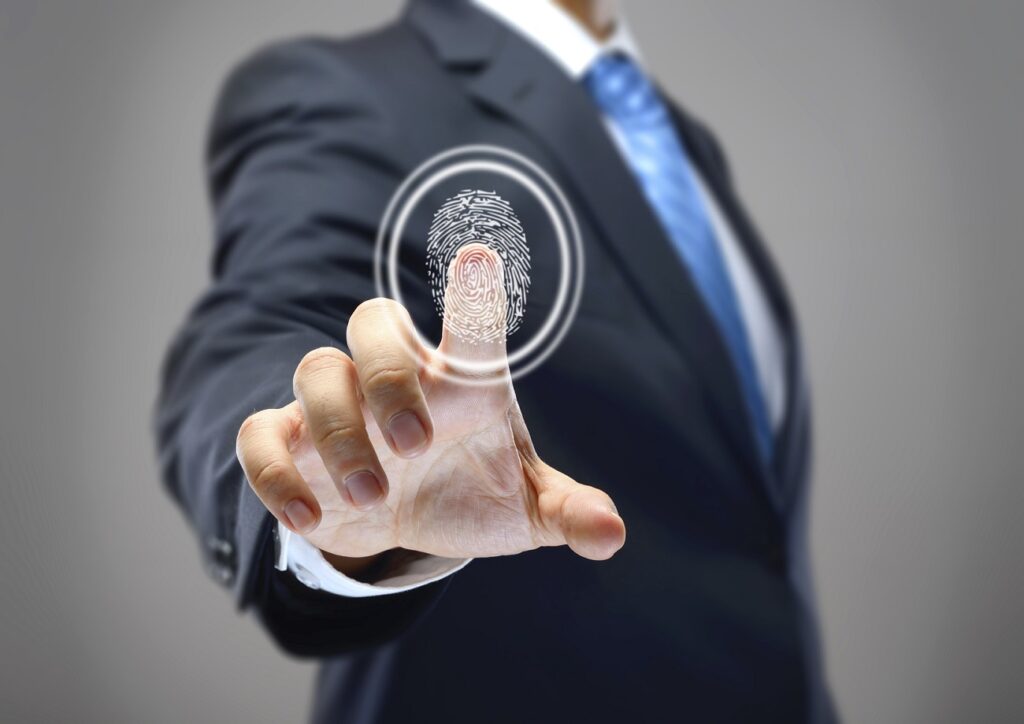Forensic scientists have been scouring crime scenes since the late 19th century, for one very good reason: our fingerprints are unique. They mark us out and make us identifiable. Psychologists have now discovered that the way we process information and respond in assessment tests is as individual as the ridges on our fingertips. This makes it possible to create a ‘psychometric fingerprint’ of your candidates.
Unlike a digital footprint, which is a record of the ‘trail’ you leave online, a psychometric fingerprint is the information that candidates reveal about themselves when they complete an assessment.
This is a radical new development in psychometric testing. For over 120 years, assessments have presented candidates with question items and scored them on their responses. But now we have an opportunity to do so much more.
Data insights
Thousands of ‘data points’ are available when someone is completing a test.
Assessment providers usually assume that each test taker is seeing their test for the first time. But this isn’t true anymore.
For example, their response time, the options they choose, how often they correct themselves in the test and even whether they fiddle with the mouse or move their tablet while they’re thinking.
In other words, a multitude of valuable insights can now be collected, compiled and interpreted.
All this combines to provide a ‘fingerprint’ of each candidate.
So as well as finding out what score they achieved in the test – which was all you could do in the past – you can now detect ‘how’ they completed the assessment.
Our research shows that the way someone undertakes a test remains remarkably stable regardless of which type of assessment they’re given.
The upshot here is that a whole new subset of additional information is now available about your candidates.
When we repeat a test, we get better at it. There is a clear ‘training effect’.
A possible analogy is the 1971 research by psychologist Albert Mehrabian which states that when we have a conversation, our words account for only 7% of the message we convey.
The remaining 93% of what we communicate is transmitted non-verbally through our tone of voice, our body language and our facial expressions. In assessment, the ‘words’ are the score that someone achieves in a test.
The candidate’s psychometric fingerprint provides extra information that adds value and paints a fuller picture.
What’s the benefit?
Implementing assessments that track and reveal a psychometric fingerprint will provide two key benefits.
Firstly, you’ll quickly be able to tell whether the same individual completed each test.
Employers sometimes ask candidates to undertake an ‘authentication assessment’ prior to their appointment, to verify whether their results match the scores of the assessments used earlier in the selection process. Unfortunately, these results can be misleading.
The misleading nature of authentication assessments
A candidate who achieves a high score on a numerical reasoning test may also score highly on a verbal reasoning and an abstract reasoning test. But some people are strong in numerical and verbal reasoning and do not score well in abstract reasoning tests.
Candidates should be told what data you’re collecting through your assessments, why you’re doing it and how that data will be used.
It can therefore be difficult to tell whether the same candidate sat all of the assessments, if you’re just looking at the test results.
However, the candidate’s psychometric fingerprint – the way they’ve ‘processed’ each assessment – would clearly show you if someone else had taken any of the tests.
The second benefit is that a psychometric fingerprint can help you to identify a candidate’s potential. Let’s say that two candidates achieve the same score in an assessment, how do you choose which of them has the highest potential?
The answer emerges from a new truth about psychometric testing.
Assessment providers usually assume that each test taker is seeing their test for the first time. But this isn’t true anymore. Even with randomised questions and adaptive tests – which adapt to the answers given – candidates can ‘train’ themselves to perform well in a particular test.
When we repeat a test, we get better at it. There is a clear ‘training effect’.
So two candidates may achieve the same score but one may have trained more to accomplish that. This creates an unlevel playing field.
For example, if the ‘test’ was to run a mile, the two candidates would finish at the same time – but one may have trained for six months to achieve that, while the other may not have trained at all. Which of them has the greater potential?
Psychometric fingerprints allow you to quickly be able to tell whether the same individual completed each test.
A psychometric fingerprint helps you identify how much ‘training’ has been undertaken to achieve a test score.
One simple indicator is how much time the candidate spends reading the instructions. If they skip the instruction sequence and go directly into the test – and achieve a good score – you can assume they’ve done that assessment before.
A whole host of next-generation assessments – from ability tests to situational judgement questionnaires – are now being built which collect the data that reveals a psychometric fingerprint.
The challenge in developing these tests is to decide what data is required. A test provider can then create a combination of measurement points which will provide that information and they’ll analyse and interpret each candidate’s responses.
Best practice
The International Testing Commission is working on a set of best practice guidelines in this area, including the ethical implications of creating a psychometric fingerprint.
For example, candidates should be told what data you’re collecting through your assessments, why you’re doing it and how that data will be used.
Doing this may lead to candidates trying to ‘play the system’ by changing the way they respond in a test.
However, because you’re collecting and combining data from many different points, they won’t be able to hide their fingerprint completely. The way they complete the test will still be wholly individual and identifiable.
Psychometric fingerprints will forever change the use and the purpose of assessments. Increasingly, you’ll want to know not just what score a candidate achieved but how they went about it.






